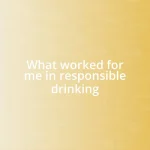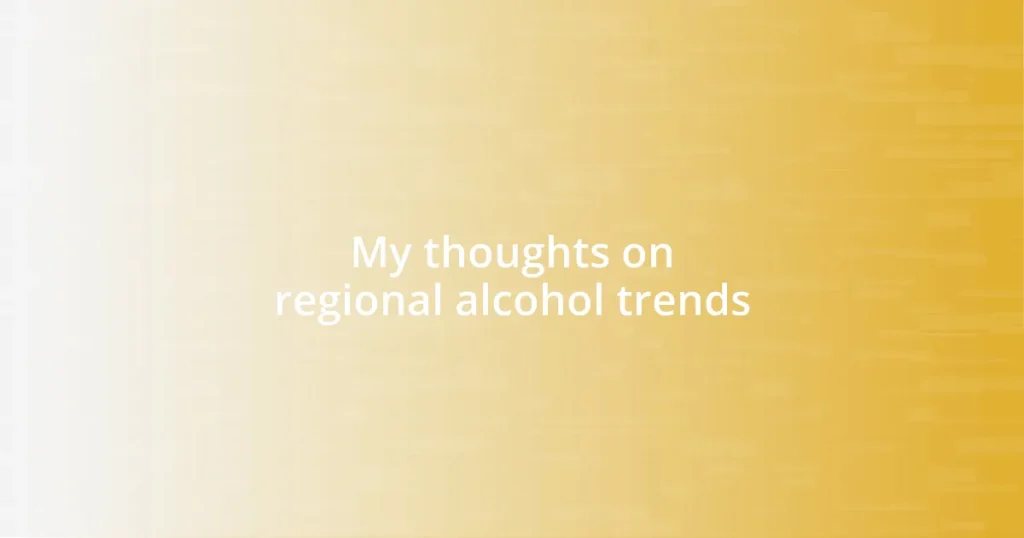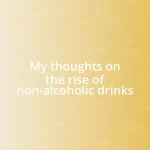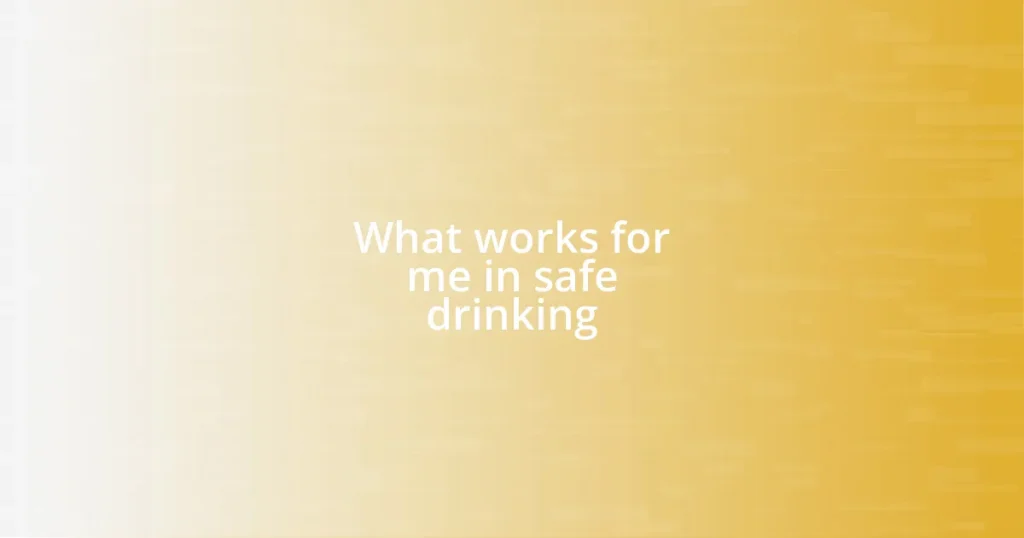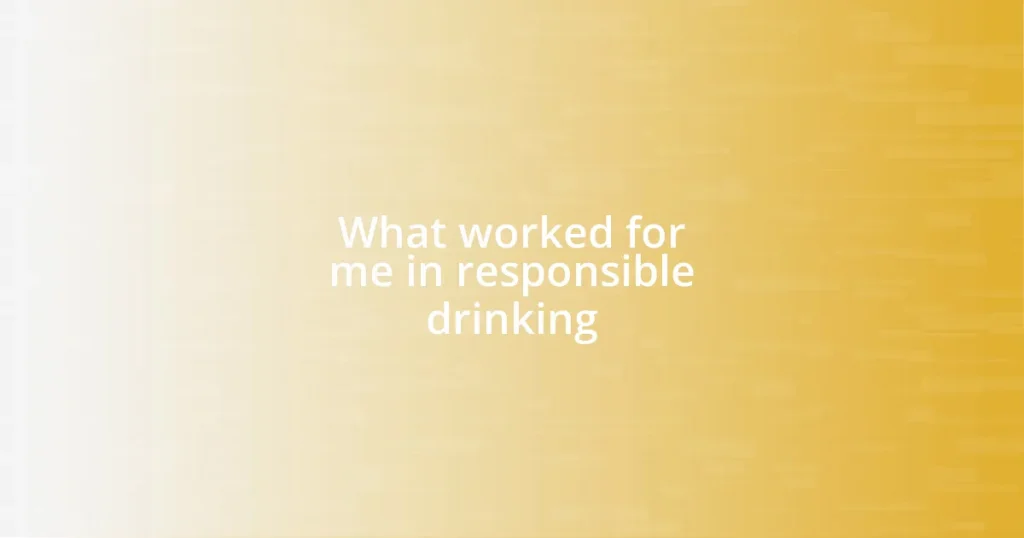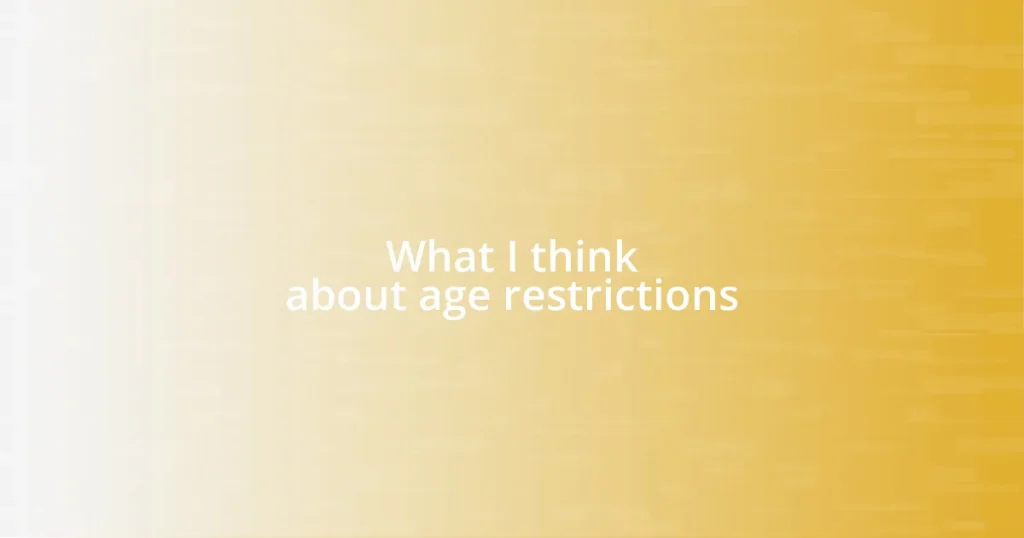Key takeaways:
- Regional alcohol preferences showcase local culture, climate, and social dynamics, influencing drink choices throughout the year.
- Emerging trends in alcohol production focus on sustainability, local sourcing, and health-conscious options, reflecting changing consumer values.
- Personalization and technological integration are shaping the future of drinking experiences, emphasizing tailored cocktails and health-oriented alternatives.
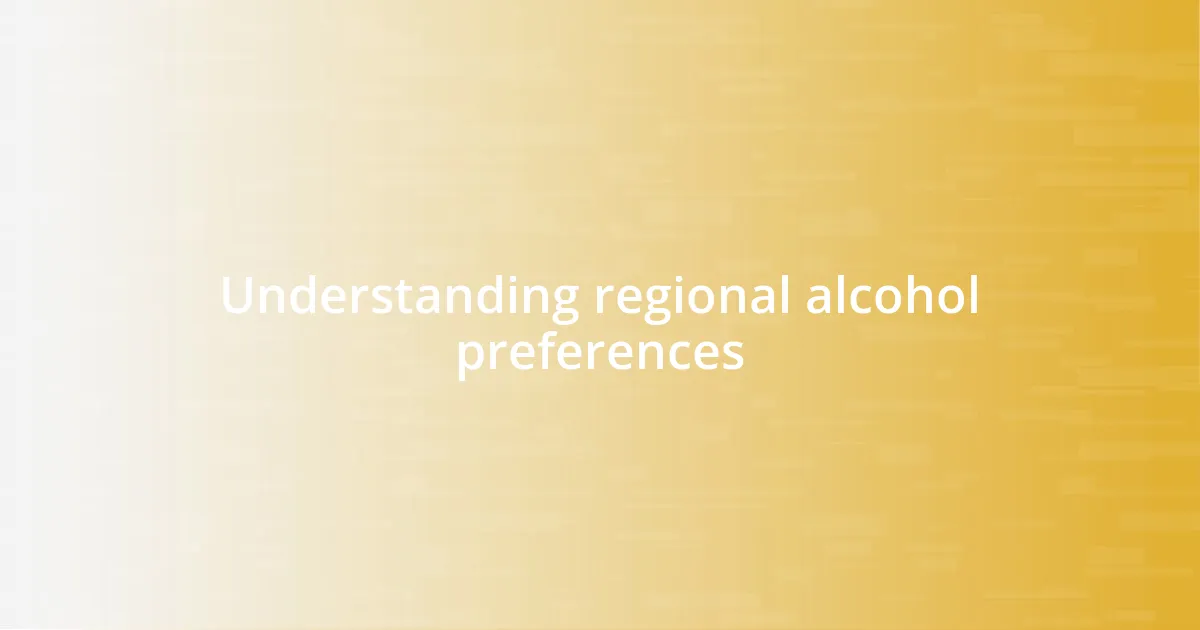
Understanding regional alcohol preferences
Understanding regional alcohol preferences is fascinating because it reveals so much about local culture and traditions. For instance, I remember visiting a small town in the south where the locals swore by their homemade bourbon. They spoke about it with such pride, sharing stories of family recipes passed down through generations—who wouldn’t be intrigued by that?
In contrast, while traveling through the Pacific Northwest, I discovered a vibrant craft beer scene. Each brewery offered unique flavors, inspired by local ingredients and the stunning natural surroundings. It made me wonder, do our surroundings shape our tastes more than we realize? For many communities, the type of alcohol consumed often reflects not just preferences but also the social fabric and creativity of the region.
I’ve also noticed that climate plays a significant role in alcohol choices. When it’s hot and sunny, lighter drinks like tequila or refreshing cocktails seem to dominate. During winter months, however, heavier, warming drinks like mulled wine or dark spirits come to the forefront. It’s a simple but profound observation—doesn’t it make sense that our drinking habits ebb and flow with the changing seasons?
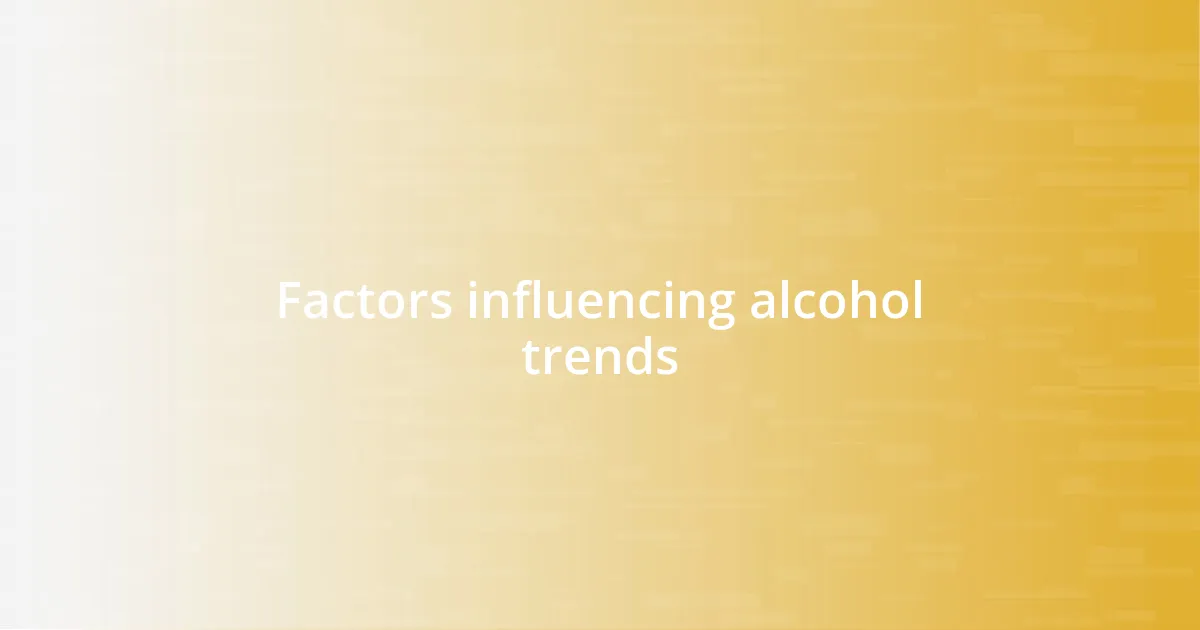
Factors influencing alcohol trends
Understanding the factors influencing alcohol trends requires delving into a mix of cultural, economic, and social elements. For instance, in my experience, social gatherings often dictate what people drink. I’ve attended BBQs where craft beer is almost a requirement, while holiday parties bring out the richer spirits like whiskey or brandy. These moments highlight how our collective experiences shape what we reach for when celebrating together.
Another factor at play is the economic landscape of a region. I once visited an area where local wineries struggled due to pricing competition from mass-produced brands. The community’s pride in supporting local agriculture became a driving force in reviving those businesses. This dynamic illustrates how economic challenges can influence not just the drink of choice but the very existence of local alcohol industries.
Health consciousness is also a significant influencer. During a recent stay at a wellness retreat, I was amazed to find that many participants opted for low-alcohol or alcohol-free options, seeking balance rather than excess. This shift is transforming how brands market themselves, adapting to the growing demand for healthier alternatives. So, what does this mean for future trends? It suggests that as customers become more health-aware, there could be an even greater evolution in the types of beverages available.
| Factor | Influence on Trends |
|---|---|
| Cultural Norms | Shapes local drinking habits and preferences |
| Economic Impact | Affects the viability of local producers vs. mass-market brands |
| Health Consciousness | Drives demand for low- and no-alcohol options |
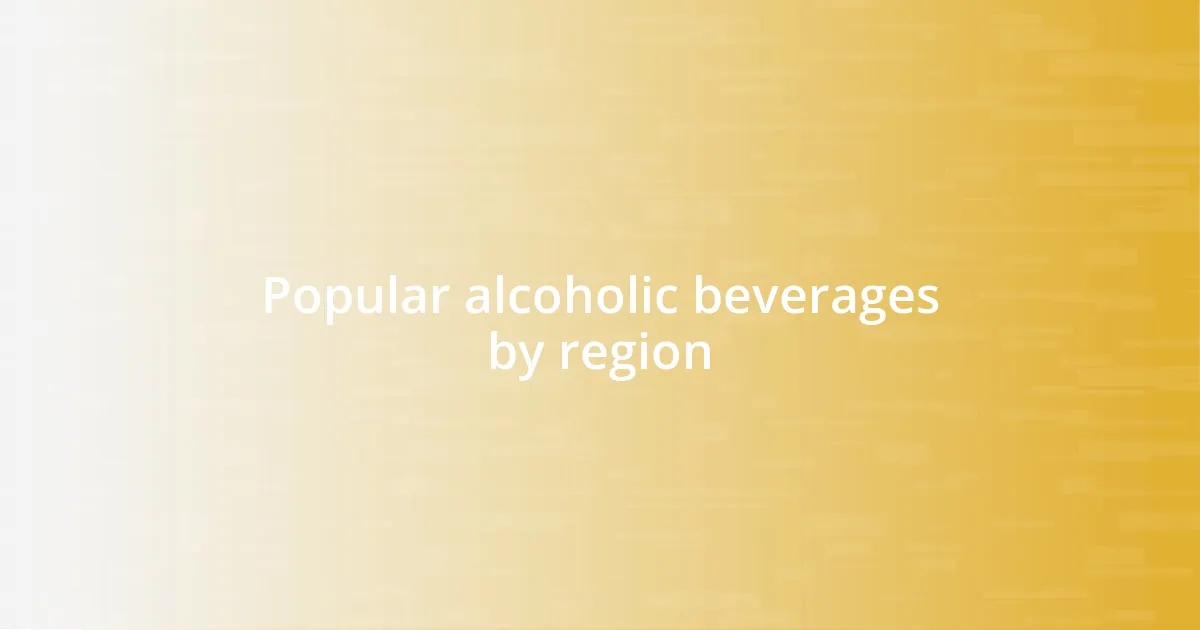
Popular alcoholic beverages by region
In exploring the landscape of popular alcoholic beverages by region, I find that each area has its own signature drinks that tell a rich story. For example, during a memorable trip to Mexico, sipping on authentic tequila at a local distillery was a revelation. The vibrant flavors and the passion behind each bottle resonated with the culture and craftsmanship of the region. Similarly, in Scotland, my exploration of various single malt whiskies opened my eyes to the distinct characteristics influenced by the local terrain and weather, each dram a glimpse into the heart of the Highlands.
Here’s a quick overview of popular beverages by region:
- North America: Bourbon in the Southern U.S., craft beers in the Pacific Northwest.
- Europe: Wine in France and Italy, whiskey in Scotland and Ireland.
- Asia: Sake in Japan, soju in South Korea.
- South America: Pisco in Peru, cachaça in Brazil.
- Africa: Amarula in South Africa, sorghum beer in various regions.
While traveling, I can’t help but notice how deeply intertwined these drinks are with local celebrations and everyday life. I shared a bottle of Chianti with some new friends at an Italian trattoria, and it felt like we were savoring not just the wine but also the very essence of Italian hospitality. It strikes me that these beverages are more than just drinks; they embody stories, relationships, and the soul of the places we visit.
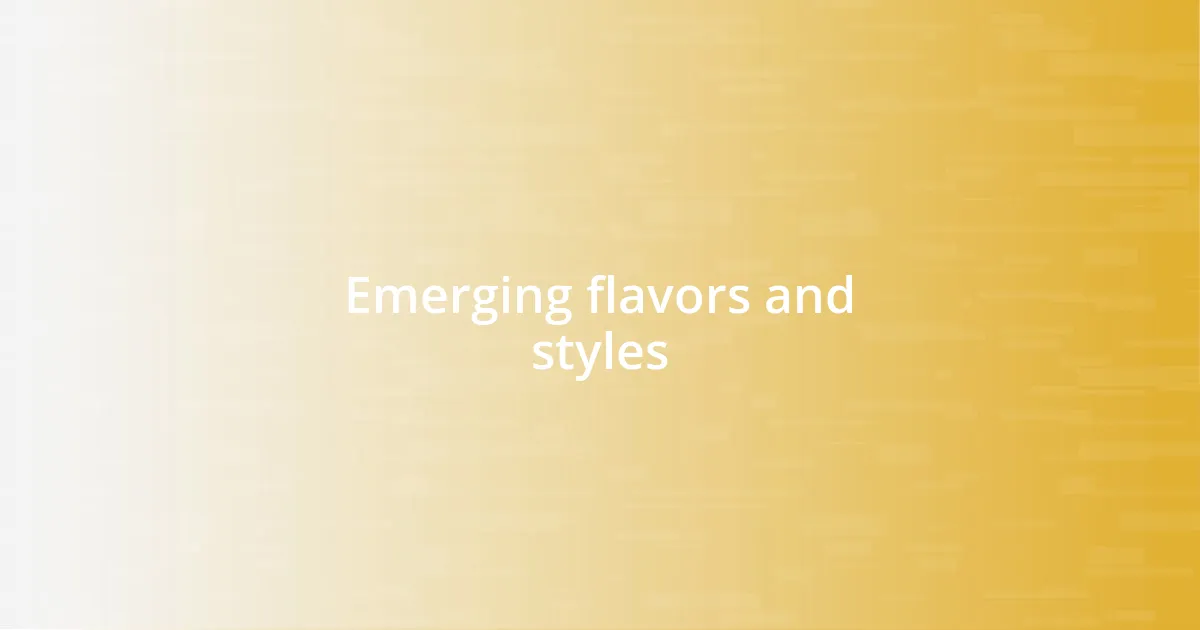
Emerging flavors and styles
The emergence of unique flavors and styles in regional alcohols is truly exciting. I remember attending a craft beer festival where the local brewers showcased their innovative creations; one standout was a blueberry-infused lager that balanced sweetness and tartness perfectly. It was a delightful reminder of how regional ingredients can bring forth bold, new interpretations of traditional drinks.
I’ve also noticed that natural wines are gaining a foothold in many areas, especially in wine-centric regions. These wines, often made with minimal intervention, have a rawness that feels authentic and unpretentious. Each bottle I’ve tasted has its own story, whether it’s from unique local grapes or creative fermentation methods. Isn’t it fascinating how these emerging styles resonate with those who seek genuine connections to their beverages?
Additionally, I’ve been struck by the rise of spirits that incorporate local botanicals, like gin infused with local herbs. At one distillery visit, I experienced a gin that featured wildflowers from the surrounding hills—each sip felt like tasting the landscape itself. This trend highlights a growing appreciation for the relationship between place and flavor, making every drink more than just a beverage; it’s an adventure waiting to unfold. Don’t you think that enhances our drinking experience?
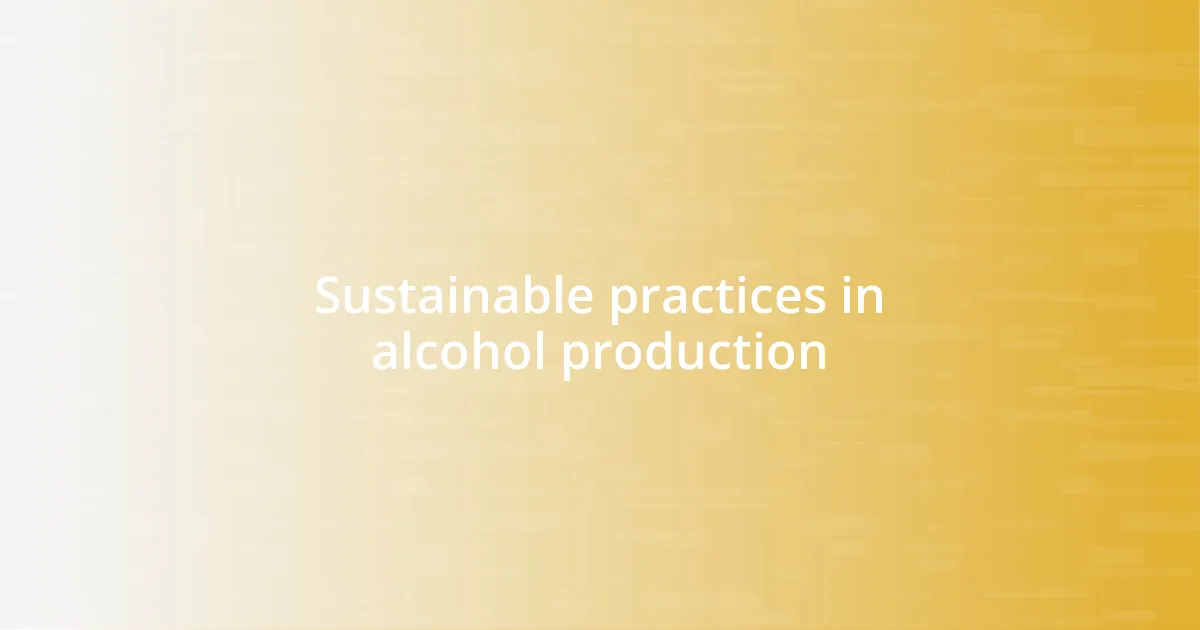
Sustainable practices in alcohol production
Sustainable practices in alcohol production are becoming increasingly vital, and it’s refreshing to see how many producers are taking this to heart. I once visited a winery in California that utilized solar panels and rainwater collection systems for irrigation, which not only reduced their carbon footprint but also inspired me to think about how small practices can lead to significant change. Can you imagine enjoying a glass of wine, knowing that the vineyard played an active role in environmental stewardship?
I also find it fascinating when distilleries focus on local sourcing of ingredients. At one craft distillery, I learned they used heritage grains that not only create unique flavors but also support local farmers. The sense of community was palpable in that place, and it made me appreciate my drink even more. When producers embrace this approach, it feels like they’re not just crafting a product but weaving a tapestry of local tradition and sustainability. Doesn’t that make every sip feel a little more special?
Moreover, I recently discovered that some beer makers are adopting circular economy principles by repurposing spent grains into food products. For instance, one brewery I visited partnered with local bakeries to create delicious bread using their leftover grains. It was a true “waste not, want not” ethos that struck a chord with me. This innovative practice not only reduces waste but also nurtures local collaborations that benefit everyone involved. Could this be the future of alcohol production, where every drop and grain is cherished?
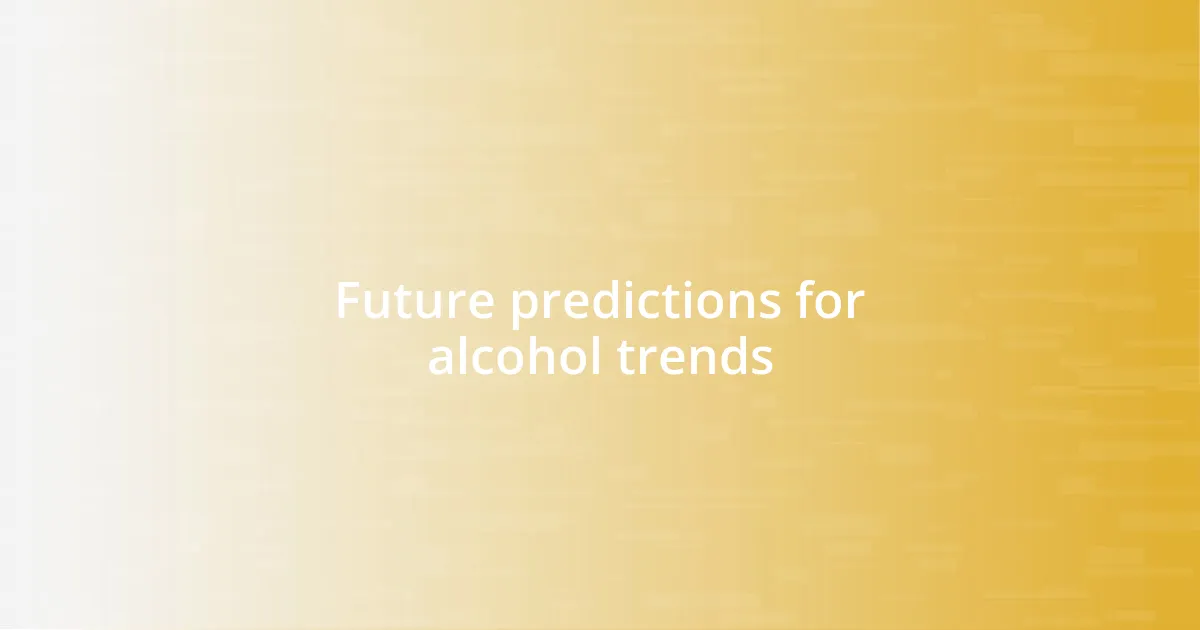
Future predictions for alcohol trends
The future of alcohol trends seems to be leaning heavily towards personalization and experimentation. I recently attended a tasting where participants crafted their own cocktails using a variety of ingredients, which made me realize how much people crave unique drinking experiences. Isn’t it exciting to think that in a few years, we might have drinks that are literally tailored to our individual tastes, perhaps even available through apps that suggest blends based on our preferences?
I’m also quite intrigued by the integration of technology into the alcohol industry. Take smart dispensers, for example, which could provide data on the precise measurements of spirits used in cocktails. I once chatted with a bartender who had implemented one, and they mentioned how this technology could not only create consistency in drinks but also educate patrons about different flavors and compositions. Could this technological enhancement elevate our enjoyment and understanding of what we’re drinking?
I believe health-conscious alternatives will continue to thrive as well. I recall a friend raving about a low-alcohol option at a recent dinner party—a drink that offered all the flavors of a classic cocktail without the heavy buzz. This trend highlights a shift in our drinking culture, where moderation is becoming more celebrated. Don’t you think it’s refreshing to see that the future of alcohol could also embrace wellness, combining enjoyment with a healthier lifestyle?

